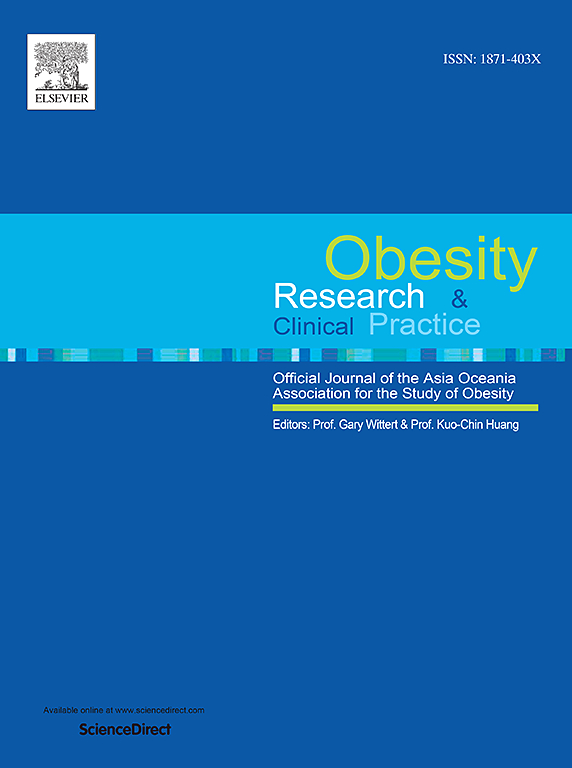Semaglutide: Nonarteritic Anterior Ischemic Optic Neuropathy in the FDA adverse event reporting system – A disproportionality analysis
IF 2.5
4区 医学
Q3 ENDOCRINOLOGY & METABOLISM
引用次数: 0
Abstract
Semaglutide, a glucagon-like peptide-1 (GLP-1) receptor agonist, is used for type 2 diabetes (T2D) and approved for obesity by the FDA in 2022 and in Europe in 2023. Its increasing use has raised concerns about access for T2D patients and potential adverse events (AE), such as Nonarteritic Anterior Ischemic Optic Neuropathy (NAION). This study investigates the association between semaglutide and these AE using the FDA Adverse Event Reporting System (FAERS). We conducted a disproportionality analysis using FAERS data. AE were identified using MedDRA Preferred Terms (PTs) and related terms. OpenVigil 2.1 was used for data extraction and analysis. This system is a spontaneous safety surveillance database for drugs. The participants are patients who reported AE related to GLP-1 receptor agonists in the FAERS database from January 1, 2004, to September 30, 2024. Reporting Odds Ratios (ROR) and Proportional Reporting Ratios (PRR) were calculated to assess the association between GLP-1 receptor agonists and the AE. Semaglutide showed a significant ROR and PRR for NAION, suggesting a stronger association compared to other GLP-1 receptor agonists. The findings suggest a disproportionate reporting signal for semaglutide and NAION. The mechanisms behind these associations are not fully understood but may involve effects on the hypothalamus and vascular health. Further research is necessary to confirm these findings ensure the safe use of semaglutide, given the potential risk associated with this rare but severe adverse event.
Semaglutide: FDA不良事件报告系统中的非动脉性前缺血性视神经病变-歧化分析。
Semaglutide是一种胰高血糖素样肽-1 (GLP-1)受体激动剂,用于治疗2型糖尿病(T2D),并于2022年被FDA批准用于治疗肥胖,于2023年在欧洲获得批准。其越来越多的使用引起了人们对T2D患者可及性和潜在不良事件(AE)的担忧,如非动脉性前缺血性视神经病变(NAION)。本研究使用FDA不良事件报告系统(FAERS)调查了西马鲁肽与这些AE之间的关系。我们使用FAERS数据进行了歧化分析。使用MedDRA首选术语(PTs)和相关术语对AE进行鉴定。使用OpenVigil 2.1进行数据提取和分析。该系统是一个自发的药品安全监测数据库。参与者是2004年1月1日至2024年9月30日FAERS数据库中报告与GLP-1受体激动剂相关的AE的患者。计算报告优势比(ROR)和比例报告比(PRR)来评估GLP-1受体激动剂与AE之间的关系。Semaglutide显示了NAION的显著ROR和PRR,表明与其他GLP-1受体激动剂相比,其相关性更强。研究结果表明,西马鲁肽和NAION的报告信号不成比例。这些关联背后的机制尚不完全清楚,但可能涉及对下丘脑和血管健康的影响。考虑到与这种罕见但严重的不良事件相关的潜在风险,需要进一步的研究来证实这些发现,确保西马鲁肽的安全使用。
本文章由计算机程序翻译,如有差异,请以英文原文为准。
求助全文
约1分钟内获得全文
求助全文
来源期刊

Obesity research & clinical practice
医学-内分泌学与代谢
CiteScore
7.10
自引率
0.00%
发文量
80
审稿时长
49 days
期刊介绍:
The aim of Obesity Research & Clinical Practice (ORCP) is to publish high quality clinical and basic research relating to the epidemiology, mechanism, complications and treatment of obesity and the complication of obesity. Studies relating to the Asia Oceania region are particularly welcome, given the increasing burden of obesity in Asia Pacific, compounded by specific regional population-based and genetic issues, and the devastating personal and economic consequences. The journal aims to expose health care practitioners, clinical researchers, basic scientists, epidemiologists, and public health officials in the region to all areas of obesity research and practice. In addition to original research the ORCP publishes reviews, patient reports, short communications, and letters to the editor (including comments on published papers). The proceedings and abstracts of the Annual Meeting of the Asia Oceania Association for the Study of Obesity is published as a supplement each year.
 求助内容:
求助内容: 应助结果提醒方式:
应助结果提醒方式:


